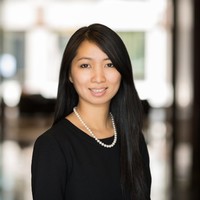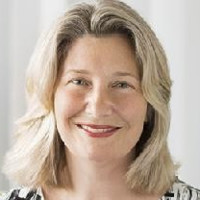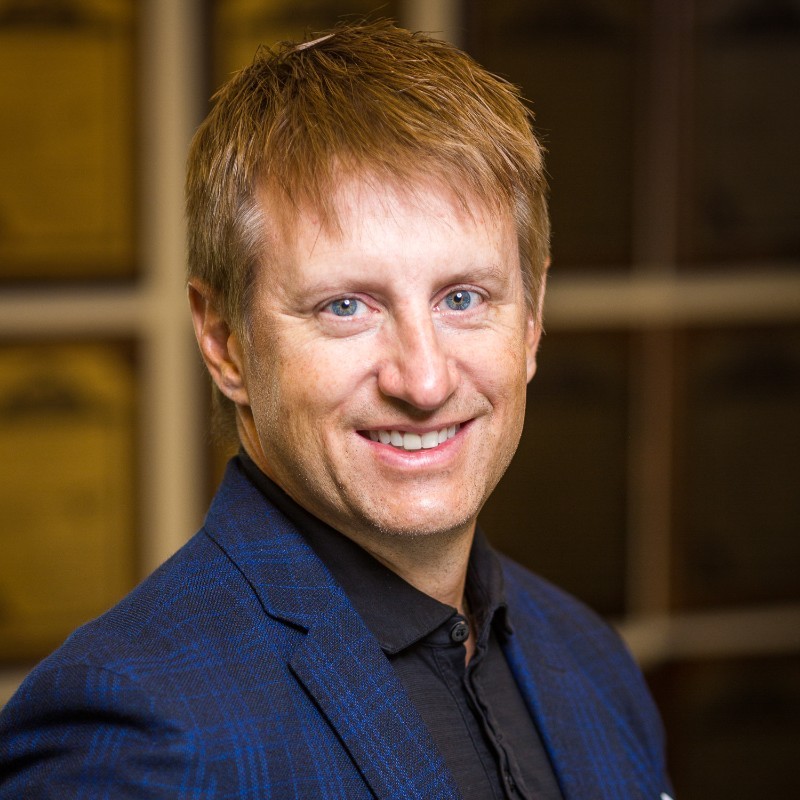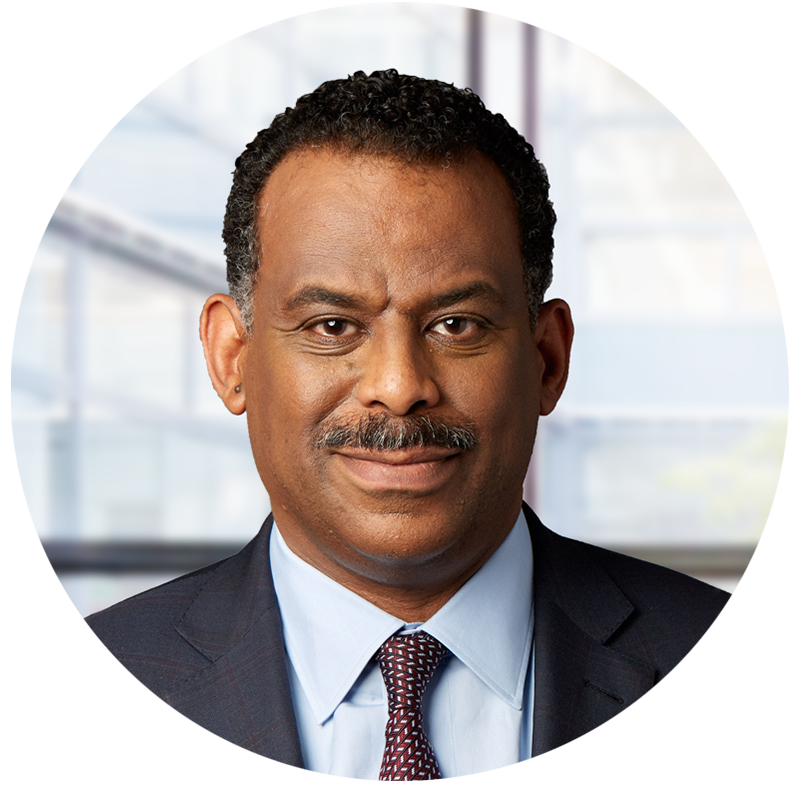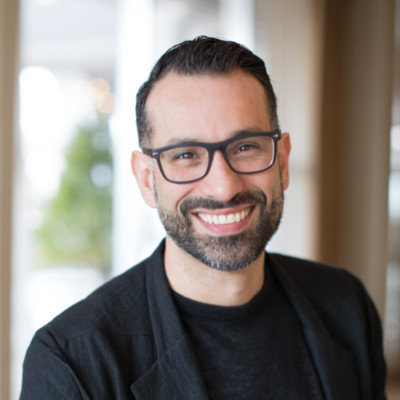Same Goal, Different Paths: CEO Spotlight on Raising Capital
Shannon Lam 0:04
Thank you for another great conference. So, I'd like to go ahead and let our panelists and talk about their unique fundraising path.
Berk Tas 0:25
All right. Thank you for that. Sorry, I'm late. I was just about to get a special microphone, but this this will do. We're introducing ourselves in our path for funding. Okay, my name is Berk Tas. I'm the CEO of SentiAR. And I think the our, our, our pathway to fundraising, I would say, probably a scrappy pathway. Probably a lot of entrepreneurs can relate to that. But I think specifically, we've done a an interesting thing, a lot of European companies will come to the US for funding, we actually got funding from a European fund. Because of a very strategic fit with one of the partners, they happen to be the creator of the industry that we're in. So it was a big, not a big credibility added to our company. So I think that's probably unique from our perspective, aside from a very scrappy raise, but I guess you do I get the call goes next. God, yeah.
Karen Holzberger 1:33
Thanks. That was great. I'm Karen Holzberger. I'm the CEO of spin tech, and I've been in the role 45 days. So when you talk about fundraising, I'm in the process right now. So, you know, doing our Series A and you know, having that journey with investors coming in, I would say scrappy is a really good term. You know, historically, ours has been scrappy, and probably a little bit lumpy when you're dealing with non dilutive capital coming from the US government through NIH grants, you know, which is a really great way in what our founder has done to really identify form fit and function of a solution before taking it to market before taking into the regulatory. So that's been a terrific journey for him. And now my in process journey of a Series A with investors in term sheets and raising capital here. So it's been really exciting.
Joseph McGinley 2:30
Great, my name is Joe McGinley, I'm the founder and CEO of McKinley, orthopedics. And we're located in Casper, Wyoming. So none of you will forget that after tonight. You know, we've taken some very our products. First of all, we'd like to innovate in the orthopedic industry. And we've carried that over into how we raise funds, even how we sell our products. But on the fundraising side, you know, we've raised over 23 million to date in our company, all with private investment, no private equity, no venture funding into our company. We're gonna see David Weil talk tomorrow about the jobs act, I think we use every nuance of the jobs act to fund our company to date, we've raised funds using Regulation D, 506B, and C. And, you know, we're excited to announce that we're going to be transitioning, hopefully to a Reg A+ plus here in a few months to do a growth round, you know, with a Reg A+, we can raise up to 75 million per year in a similar manner by private investment private individuals, which allows us to continue to control management of our company. So that's how we've done it today. Hopefully, we'll be successful with the Reg A+ plus and continue growth funding with our company. Great. Switch, thank you.
Lishan Aklog 3:47
Alright, let's start over. I'm Lishan Aklog. I'm the Chairman and CEO and co founder of PavMed, which is a public NASDAQ listed diversified medical technology company. And I'm also the subsidiary of its public subsidiary, Lucid Diagnostics, which went public this last this last fall. And I guess we're picking a single word to describe our, our path because this is different paths, I would say probably contrarian, and that we've, we've utilized entirely the public markets since we founded nearly entirely this company in 2014. And went public in a very small IPO, not Reg A+ plus, although David Weil was on our board for many years, but through a traditional S1 front door, NASDAQ IPO for both, and I'm sure we'll have an opportunity to talk about the pros and cons of that. But I'm a big believer in the flexibility that it provided us even though we were pre revenue non commercial for the first five years of that, so leave it there.
Shannon Lam 4:52
So in preparation for this panel, we talked a little bit about how different types of capital come with different strings. And so, I'd like to ask each of you how you came to decide on the fundraising path that you chose. Maybe we'll start with, okay,
Lishan Aklog 5:09
Great. So we chose the public markets because the, the parent company PavMed is a bit unusual in that it's, it's, it was designed from day one to be diversified across all aspects of medical technology, we were really determined not to be pigeonholed and into any particular specialty and have the opportunity to incorporate technologies across the spectrum. What we didn't realize at the time, was that was going to extend beyond medical devices into diagnostics and now into digital health. And that's, that was a that found an easy story to tell traditional VC investors because they're looking for a very clear story with a clear, you know, we're going from A to B to C to D. And so we felt that it would provide us with the flexibility to be able to pounce on opportunities that came our way. And that's actually how it's played out. It's also allowed us to build a diversified company with subsidiaries that are created through the through licensing technology, and in a sense, almost pretend to be a larger diversified company. And that even though we don't have cash flow at the parent to drive, this diversification, we have enough access to capital of the parent that we can start subsidiaries financed them from the parent, which can raise its own capital on unencumbered, you know, at the parent level, and then when the subsidiary reaches the point where it truly needs growth capital, it already has a story to tell. And that's how we, we did this with the with our diagnostics, subsidiary, lucid diagnostics.
Joseph McGinley 6:56
Pass that one back to you, I guess this is the hot mic for tonight. You know, we chose our path really out of need. And, you know, we first started our company with innovative medical technologies, we had a lot of physicians that wanted to invest in our product and in our company. And we had a very nice stream of revenue coming in from investment from the individuals. It worked well we can contain and we could continue to maintain management control. But then we have a lot of individuals that were involved, that wanted to actually helped grow the company and help become involved. So it worked really well for us. And then we figured out a way to include a larger number of our investors and individuals, not necessarily in the day to day of the company. But if we had needs, we had such a diverse group of investors, we can say, hey, we're trying to do this, anyone have expertise in this area? And sure enough, you'd get 10-20 investors reach out and say, absolutely, we can make introductions, we can help keep this going. So you know, it worked really well for us using individuals and having them as part of the team part of the family as we grew the company. Now, you know, when you get to a certain point that becomes a little bit challenging to manage, maintain that number of investors, and still have that intimate feel for the individuals. But again, you know, we've tried to innovate that and we've tried to keep them included in the process and help us keep going forward.
Karen Holzberger 8:20
We're not gonna switch mics right now. I think we're okay. I think for us, and especially with, you know, where SpinTech's roots are is in in science and math and technology that you can use, you know, academic research funding through the NIH to really, you know, understand clinical effectiveness, technical feasibility, and early insights to market acceptance, we became to at this inflection point and why series a funding was needed is to really think about now, we're post regulatory, but what is the go to market? What is the commercialization strategy? What is, you know, how do we start to really grow the business moving from research to clinical adoption within the health systems. And that was really one of the decision points of the the angel investors in the board of really going out to seek capital. And that's, I think, an important decision point for founders, you know, really the innovators of when to make that choice of seeking, you know, traditional investment from VC. And that's really where we are today.
Berk Tas 9:24
I think that the pattern for startups on what path you choose, it depends a lot on the technology and the market that you're going after. And for us, our technology, it's a holographic ablation guidance system. It's a wearable headset here for the first time ever. The promise of using augmented reality in an actual procedure is now becoming a reality. But when this company was started four, five years ago, it's really difficult to convince you heard the investors before us talk about these risks, right? And when Tak was talking about all those risks, I'm like, there's zero chance we checked any of those boxes five years ago, right? So it's, it matters a lot on what you're doing and what market you're going into. So I think, for me, it's really important to be self aware of what you're doing and the limitations, because it's really easy to chase the big stories, you know, so and so company got 30 million from NEA one of the most premier venture funds, not every tech is developed like that, as you can see, right. So we started with NIH grants. For this reason, it was an academic spin out, and we were able to convince the government to give us $2 million dollars, to start this thing, as this is going to change how these procedures are completed, for the better for the patients for a massive disease, AFib 40 million patients have it today. And now fast forward, the next thing we have, really seeked is an investor who understands the field better than anyone else. This is a tall, ask, there's only like, you know, a dozen people in the world. And for me, that was the strategy, how do we get people behind our technology and support us. So we can actually build something that was not even imaginable a long time ago, and then start to establish with clinical data, our own standard, so that we can start to actually build something from there. So it's a very different journey for everybody. I think that the bottom line to me is that you really got to be aware of what you're going after, and the limitations, and just stay true to who you are. And I think that hopefully, provides some sort of comfort knowing that you don't have to do what everybody else does.
Shannon Lam 12:14
So Berk, and Karen, maybe you can also speak to the pros and cons of government funding.
Karen Holzberger 12:20
So I'll start government funding, you know, it's slow, you, you, you know, put in your grant request, you know, you put your, you know, your papers in and all of that, and then you wait. And so we're in the middle of doing a grant grant request right now with the NIH amount of commercialization of our next product around cerebral microbleeds. And we submit it and we won't hear until December. And the money also, this is a funny word drips in. And so it drips in monthly or quarterly. And so it's really hard to predict and really put growth plans into place when funding sources come in, in that way in, you know, lumpy ways, scrappy ways, unpredictable on timing, and all of that. And so I think you've got to be really specific of how you're going to use those funds. Is it early commercialization, to get to regulatory? Is it around, you know, proving out a proof of concept from research around the device that you're building? And then really think, how do you start to shift and then, you know, shift into higher gear around the commercialization efforts of that. I think that's a really interesting way to have to think about how those funds come in, when they come in and how they're used over time.
Berk Tas 13:37
I won't regurgitate the things you said, because I think they're absolutely spot on. You talk like someone who's been through it. So you consume the information. That's, that's very good. I think the things I would add to it is grant writing is an art. And you really need to know how the whole process works, so that when you're stuck in this drip by drip mode, you're actually making progress. So it's a bit of a challenge. academics do a great job with this because they live this life, right? They run their labs with grants. Our co founders happen to be grant reviewers themselves working for the government. So it's a it's a volunteer position, and you get selected based on your credentials. So it's, it was a unique situation for us. But obviously, the big pro is it's non dilutive, and NIH or NHLBI, or whichever Institute you're working with, they'll they are able to take different risks than any early stage VC can take. It's a very different organization in that way. So those are pros, if you're if you're trying to do something that can impact our field in a massive way, and really there's no corollary, and it's really difficult to account for it and put together a nice investment committee review for a VC to get you the funding. I think it's a great utility. But if you don't know what you're doing in grants, you better get help and write a good grant. So that you can use those funds to actually build the company. Because there's so many technologies that get a grant. And they can't build the company beyond the grant itself and deliver something, but it doesn't go anywhere from there. So that's the con part of it.
Shannon Lam 15:43
So I'd love to be able to give all the CEOs who are watching some, you know, practical advice. And so if there was one thing or one hire that each of you made to help you, you know, close your fundraising, what would it be?
Lishan Aklog 15:58
If you take if you're going the path we took, which is to utilize the public markets, it's that's an easy question, you have to have a very experienced CFO. So we have Dennis McGrath, who's we were just fortunate enough to, to, to bring in about a year less than a year after we went public, and 20 years in the public markets, both as a CFO and a CEO. And then you know, it's just a whole ecosystem, all of the all of the SEC filings, all of the public audit, accounting, the access and Rolodex as it relates to investors, public and public investors, bankers, moving up the ecosystem, all of the things that you have to do, as a, as a micro cap, public company, are all centered around that. So that's quite easy.
Joseph McGinley 17:01
Yeah, for our company, as well, it was our CFO. So, you know, here's another great Wyoming story for you. We met our CFO in Wyoming, I was being recognized our company is being recognized by our governor in the state of the state address as an innovative startup company in Wyoming. And sitting next to me was the current president of the University of Wyoming. We'd never met each other after the event, we went out to lunch and we're chatting a bit. And I come to find out he his history was in venture capital back on the East Coast for most of his life he came out to Wyoming, became involved with Wyoming Business Council was teaching classes at the university ended up becoming the university president and was ending his term. So we were looking for a CFO at the time, and I said, Listen, we're a small startup don't take this as an insult. But would you like to be our CFO? You know, he's like, I thought you'd never ask. And, you know, he ended up joining our team, and just that respect and credibility that he brought to our team. And his experience in venture capital helps immensely it helped guide me helped guide our company, and help to have those conversations where, you know, I just didn't know what I didn't know. And he provided that background and knowledge and we worked very well as a team, raising funds and having the investor conversation so for us by far, you know, our CFO coming on board has been our biggest asset for raising funds.
Karen Holzberger 18:28
I'm gonna say CFO also, is I've we're like the trifecta right here. Are you gonna say the same thing? Okay, good. Was in the job, 24 hours, and I'm looking at term sheets and starting negotiate and trying to understand the cap table, and all the finances and all the information that comes with capital investment. And I said, Who can I call? And so I ended up a consultant CFO that I'd worked with, because I sat on the other side of it. I was acquiring companies from the corporate side, you know, working for GE, and then a company that was just acquired by Microsoft. And I said, Who did I work the best with on the other side of the table? And I called him up the next day. I'm like, I haven't talked to you in three years. Will you come on board? And he said, Absolutely. And so having a trusted adviser who's been on the side of the table, who understands capital raises, who understands founders, who don't necessarily understand what dilutive capital means to them to help guide that way and be really just a source for me has been incredible this past month. So you don't have a CFO? No. Are you rethinking that strategy?
Berk Tas 19:41
I was sitting here I'm like, man, maybe that's what I gotta do. No, but but I think the theme is you need to understand the particular capital strategy you have and not just like have a I'd like a casual understanding of it, you need to know it in and out, and what's going to come down the road. So each one of these raises, like the first, Lishan and Joe talking about technicalities, right? Like, I don't know anything about what you have to do for SEC. But the difference was, right. So so it's a complicated thing is technicalities. And it's it's a, it's an existential risk. So like, for any startup, and certainly this is, I'll speak from my point of view. I always feel like I'm managing existential risks, as opposed to what's a nice to have, you know, wouldn't this be nice? Yes, CFO would be great. But when, again, you're trying to exist? I think, really understanding whatever your strategy is. So from our perspective, I've come from other startups. This is the fourth one I'm involved with Ben through a listing. In NASDAQ, we got acquired. So I had a decent command of what what is it? Like? What is in the terms? What are the expectations? What is a reasonable thing to push back on? And what should you expect? And how do you even set those expectations? But I would say the one thing that I would go back to your question, highlight is the power of continuous networking, and interacting with the VCs, investors, Angel communities, individuals, because everyone that's invested in SentiAR, as a VC has said No, at some point. Now, I can tell you that with total honesty, and we come back to them, and we said, we did these three things that you were worried about, and and that is a huge game changer. When you go back to somebody and say, Hey, you told me this actually took care of that. Now let's go, right. And I even have another anecdote, just briefly to share someone emailed to our info@sentiAR.com. And said, I like to invest. Obviously, I assume it's a scam. Like 99% of the time, it is indeed a scam. But as a CEO, I have to follow up. That's my job, right? I don't have a CFO, so I can't delegate it to anyone, this is what I do. A big part of my job. So I followed up, assuming it was going to be a scam. And I have a rule for stuff like this. I'm like, if we can't have a video chat, I'm not even going to, you know, engage. So long story short, he put a significant amount from his own pocket. He became one of the, you know, decent holders on our cap table. And he's been absolutely remarkable. And it's just, it's just a wild ride sometimes. And that's why I say scrappy. Because we believe in what we do. I feel like we've traveled to the future. And we've lived it. And we're coming back and trying to bring people along, right? You never know, you never know who you're going to convince at what point so my biggest advice will be take that meeting. Don't discount based on some preconceived notion. I always say this, your job is to get to a yes. With them. You can decide what you do after that, just get the yes first. Just don't not take the meeting. Take all the meetings. Now you'll learn if nothing.
Shannon Lam 23:54
Great. So I'd like to thank all our panelists, and but I'd like to leave some time if anyone has any questions that they'd like to ask.
Berk Tas 24:03
Sleepy time, drinky time.
Karen Holzberger 24:08
Great. Yeah, that was an incredible story.
Berk Tas 24:14
Could you say it again? Your cap tables can you describe how creative those
Lishan Aklog 24:23
Rs are pretty straightforward. You gotta know you gotta know about list. Friend. They tell you you know, the 3000 people that invested and when I get an info @padmev.com it's usually a pissed off investors. Why did the stock go down yesterday?
Berk Tas 24:37
That's the That's The con of a proper SEC listing.
Joseph McGinley 24:42
Yeah, I mean, our cap table is pretty straightforward. And you know, we have audited financials and everything else. So it's not that complicated. If you have good finance managers, good accountants. You know, they're gonna this is what they do. They keep all that in order for you. And then it is really key to have the auditor find actuals just to make sure everything's in check and make sure that your accounting is correct. Along the way. We also just again, on a side, get those emails from time to time, I've got to say more than 50% actually been invested, as they've come in, I follow up on all of them, I usually will take those personally, because they are interesting sometimes.
Karen Holzberger 25:19
Well, I'm gonna have to watch for this. And, again, our cap table two is very, very straightforward. And I've spent a bunch of time not just understanding who's investing, why they've invested, because we've had a number of angel investors and, you know, to get us to this point, and if you want them to come back, you need to really make sure that you continue that they're really, with your strategy, understand where they're going and understanding that future. And that's a relationship over the, you know, since I started to make sure that I understood those other 10, that we're doing small investments that got us from point A to point B.
Berk Tas 26:02
Probably not a surprise, but I manage our own cap table, we use Carta, one of the equity management tools. And that's for all the different startups I've been with. It's life changing, because I think we've saved around half a million on lawyer fees, probably with all the different issuances. So our cap table is also pretty straightforward. We have some preferred shareholders, there's about 15 investors and another 15 employees roughly. There's a couple ex employees who actually exercised their stock options. Pretty straightforward, I think. I'm wondering what prompted that question, because I was trying to think like, what happens in a cap table that you would consider creative?
Audience member 26:55
You ended up with your Wyoming case, for example. And build a community over time, and it can get complicated. But it sounds like thats not the case
Joseph McGinley 27:05
Yeah, against you remembered we're from Wyoming, which is great. Yeah, you know, it's really not it, we really haven't seen any complication in it. Yeah, you know, I'd say, of our investors, maybe 25 30% from Wyoming rest, or, you know, around the country. You know, we've had various rounds, we're still listed as an LLC, we're going to be transitioning to a C Corp. You know, we've had, we've paid shares for services, things like that. But it's all very straightforward and accounted for investor communication. So yeah, I'm not, I'm not quite sure where the the complication is, I think if you manage it correctly, manage expectations and make sure that you communicate well, we haven't really seen much complication in it at all,
Karen Holzberger 27:51
We also use Carta. And that's been, you know, a really great asset tool for us to
Lishan Aklog 27:56
maybe kind of add one thing as it relates to the question from the last session about Reg A+ plus, and, and for those companies that are looking to transition to the public markets, it is really important to understand that the complex there, it is actually a sort of, kidding aside, there is a lot of complexity, particularly around retail investors versus institutional investors, if you're a pre revenue company, you're gonna likely get, you know, start off with with a high percentage of retail investors. And, you know, one of the things about these alternative paths like reggae plus is that, sure, you can go raise money, and you can be successful at doing so. And there are a lot of complexities, but every time you raise money as a public company, you know, how it performs in the after market is really key. If you're raising VC money, then you wait till the next letter in the alphabet. And you and you try to do well, between them between now and then. But if you're raising money in the public markets, you know, what the, the liquidity, the opportunities, you know, the expectation is that there's liquidity immediately. And, for example, people of you who have used reverse mergers into shell where there's a shell public company out there that sort of done all the infrastructure work, that can get hairy, because there's often hundreds of investors who are unknown, who can who can come and be a bit of a pain later. So, you know, transitioning to public, to the public markets, bear a lot of pitfalls that have to be getting watched out for
Berk Tas 29:31
I was going to add, and I know people want to leave, I get it. But now that you're asked the question and clarified, I feel like perhaps what you're getting at maybe not the cap table complexity, but the shareholder relationship complexities, and certainly, we have a couple of those. Because we have a few individuals who got enamored with the technology early on and we took their money. They became share holder's, and they really don't understand how financing works. So somebody asked me, they said, Hey, you guys had raised? I can't remember exactly the question. But you guys raised a million dollars, I put in 100 grand, I own that percentage, right? I'm like, Well, no, because we were valued at a, you know, there's an evaluation. But it's very wild to me that, who has 100 glandt grand laying around and doesn't really understand that. So it turns out, it happens. So we have a little bit of that where it takes some time to educate and manage and obviously, I can't tell them bugger off, right, like I have to actually relate and they put in money and we desperately needed it at the time. So there's certainly that complexity. And everyone will tell you, right, avoid all those scenarios. That's great. If you can, yes. But if you can't survive and build your company, and then change the world.
Shannon Lam 31:05
Well, I just want to thank the panelists. One more time for staying up here late. Thank you. Thank you.



